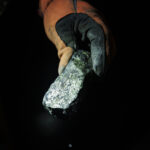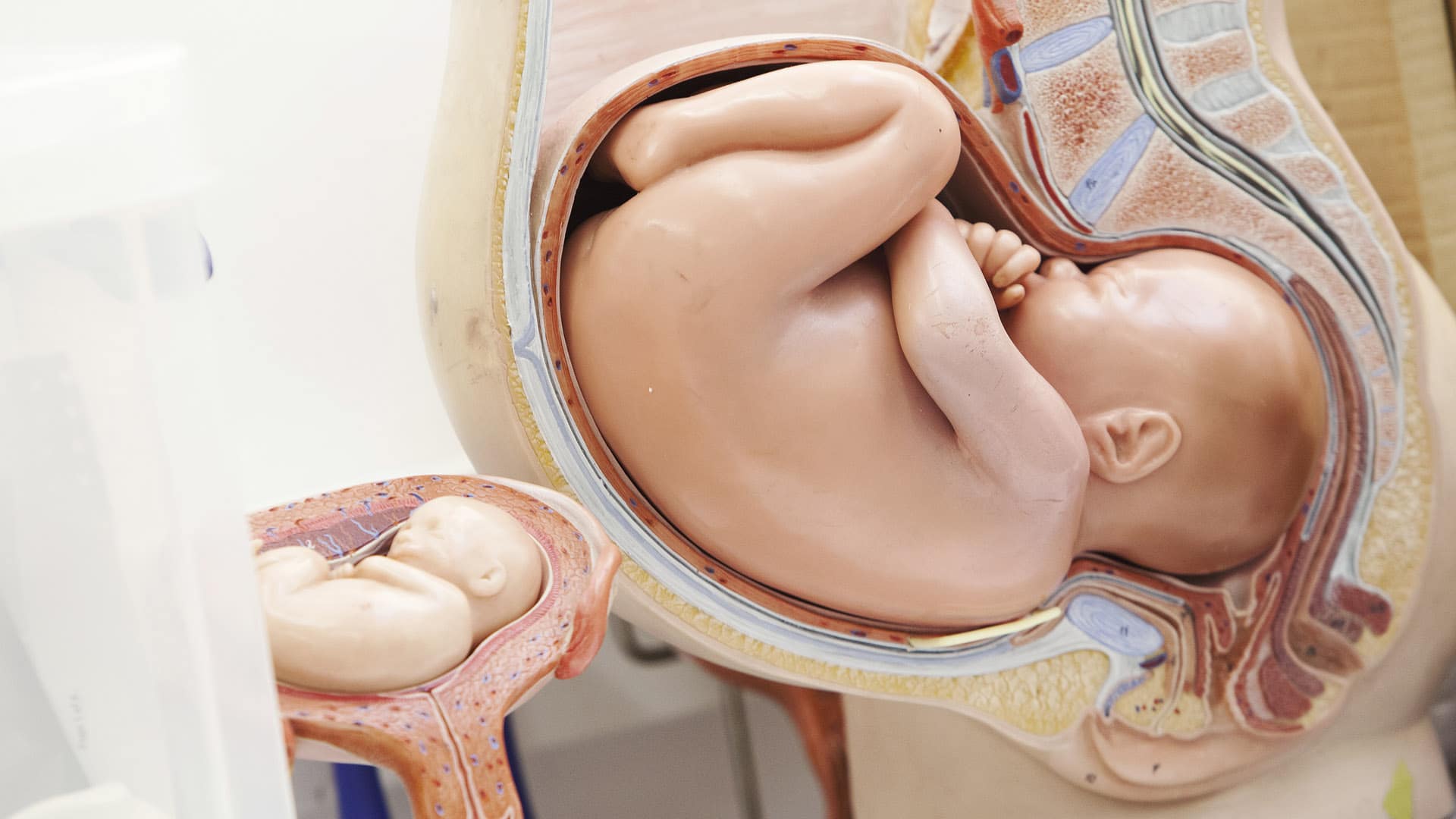While some women experience pregnancy and childbirth as joyful, natural, and fulfilling, others find themselves recoiling in horror at the physical demands of carrying and sustaining a child in their womb, and even more so at the potential brutality of giving birth. Some might view the blood, sweat, and tears as a necessary and unavoidable part of life. Others, such as the radical feminist Shulamith Firestone, writing in her book “The Dialectic of Sex,” assume a less forgiving view of the process as “barbaric” or akin to “shitting a pumpkin.” Most, like myself, oscillate between the two positions, or else sit somewhere in between.
Whatever one’s position on the matter of the “naturalness” of pregnancy, it can’t be denied that the development of artificial womb technology (known as ectogenesis) would radically change the debate. First, there are the therapeutic benefits it promises: Women prone to risky pregnancies could transfer the fetus to an artificial womb, thereby allowing fetal development to continue at little cost to their own physical health; likewise, fetuses at risk of premature birth could be transferred to artificial wombs to complete their development as required. The blood, sweat, and tears, it seems, might not be so intrinsic to the process after all.
Second, the technology could have important social benefits for women. For Firestone, artificial wombs would eliminate a crucial condition that currently ensures women’s oppression by neutralizing the heavily gendered process of reproduction. Though there exist indisputable biological differences between the sexes, she argued that this difference becomes oppressive in the unfair division of reproductive labor and its naturalization through the ideal of the nuclear family. But if fetuses were to develop in artificial wombs, women would finally be free to pursue their interests and desires outside of their reproductive duties.
Even this cursory overview of the therapeutic and non-therapeutic potential of artificial wombs seems to present a compelling case in the technology’s favor. Add to this list the many more people for whom it would make reproduction possible, and this case becomes near airtight. So, in 2017, when researchers successfully developed eight lamb fetuses in bags mimicking the conditions of a sheep’s uterus, the mainstream media attention was hardly surprising. Despite the researchers’ best efforts, their findings were recast as advancing the development of artificial wombs and, through this process, decades-old arguments such as Firestone’s were thrust back into the spotlight.
It’s true that Firestone’s claims are still well-supported among contemporary feminists — for example, the philosopher Anna Smajdor in her paper “The Moral Imperative for Ectogenesis” — but the renewed excitement surrounding artificial wombs obscures the fact that the technology’s emancipatory potential is in reality quite limited. For one, artificial wombs could ensure the fair redistribution of reproductive labor only if this labor was limited to the process of pregnancy itself. But, post-birth, it remains true that it’s (largely) women who are expected to breastfeed, pump milk, and raise and nurture the child. This doesn’t preclude those others who can and do partake in what is traditionally regarded as maternal work from the conversation, but it does remind us of the stigma and censure directed at those women who do not — whether by choice or otherwise. In this context, it’s unclear what artificial wombs would do to address the social conditions that can make reproduction so oppressive in the first place.
This hints at a much bigger problem in assuming unequivocal support for the feminist cause. Artificial wombs promise to relieve women of the physical oppression that feminists have associated with the reproductive process, but it doesn’t necessarily address the problem on the conceptual level — that is, it doesn’t challenge the particular patriarchal values and thinking that render the process oppressive in the eyes of those feminists. In fact, a closer inspection of the metaphysical entanglements of artificial womb technology indicates the potential to harm the liberation effort instead.
In her Aeon essay, the philosopher Suki Finn describes two metaphysical models of pregnancy that are said to capture current Western understandings of the process. The first, dubbed the “parthood model,” describes the fetus as a part of the gestating person in the way that an arm, leg, or kidney is. The second, the “container model,” describes the fetus and gestating person as two separate entities, which gives rise to the culturally dominant “fetal container model.” As Finn points out, it’s through this model that we can speak of a “bun in the oven” and, to add to her list, depict fetuses as floating astronauts in an empty black space rather than embedded in the uterine wall.
Though relatively innocuous in its daily use, the container model has been applied to more detrimental lengths too: As the sociologist Amrita Pande demonstrates in her 2010 study of India’s since-banned commercial surrogacy industry, fertility clinics capitalizing on this separateness between gestators and fetuses have developed dehumanizing prenatal care practices that, among other things, serve to emphasize surrogate disposability. What this shows is that the metaphysical container view might be morally neutral, but its cultural manifestation has developed and is currently utilized in a patriarchal context.
The plausibility of certain reproductive practices depends upon the kind of conceptual framework we use to understand them. The very idea of using artificial wombs to replace some or all stages of gestation reflects, for instance, an assumption that fetuses and gestating persons are in fact separable. While this doesn’t mean that artificial womb technology necessarily entails the fetal container model, current rhetoric within this debate captures the spirit of the view well: For instance, by likening the uterus to what the reproductive biologist Roger Gosden calls a “clever incubator” in “Designing Babies.”
The feminist scholar Irina Aristarkhova presents an alternative view in which the plausibility of artificial womb technology becomes less of a “workable concept” — or at least more complicated. Presumably, if one now thinks of the fetus as a part of the gestator, then the extent to which artificial wombs are truly capable of satisfying this role becomes limited. Of course, one could concede a new fetus-gestator relationship, one that extends into the realms of mechanics and machines (but the space to discuss a future so far ahead warrants an article of its own). Still, if we’re willing to confront the biological realities of pregnancy — that is, the actual inextricability of fetuses and gestators — then our future as machines (or our future without them) is, in this specific context, one that we’ll need to confront eventually.
The problem for feminists, though, is that any technology deploying the principles of a problematic model of pregnancy could unwittingly lead to its normalization or the perpetuation of these same problems. In this context, the devaluation of gestative work and the diminishing of the maternal-fetal relationship can be viewed only as antithetical to the feminist cause. While it cannot be denied that artificial wombs might still benefit a great number of people, of whom women form only part, it is worth questioning their particular usefulness as a feminist tool for liberation — speculatively or otherwise. In this context, artificial wombs could certainly alleviate the physical constraints currently faced by some women; but, without addressing the patriarchal models on which it might itself be built, the technology’s liberatory potential overall remains limited.![]()
Sasha Isaac recently graduated from New York University where she studied bioethics. Her master’s thesis was on transnational surrogacy in India.
This article was originally published at Aeon and has been republished under Creative Commons.












Comments are automatically closed one year after article publication. Archived comments are below.
The essence of this article is inherently reactionary. Even supposing the worst, that artificial wombs do persist a patriarchal stereotype, such negative impacts would again be greatly over shadowed by how such technology would alleviate women from the harmful repercussions of this patriarchal view.
The article makes no mention of this simple point…merely going from the now prohibited abuse in Indian surrogacy clinics to how artificial wombs should be viewed with the same prejudice for simply having a small metaphysical connection to it. The point of this article isn’t doing the technology justice and instead smacks of blind reactionism that under ordinary circumstances would only be useful to women who entertained the feeling of having power over the life or death of a fetus.
What would an alternative that better suited the fetus-gestator as one model? Genetically alter us women so birth is as easy and pailess as going to the toilet? That won’t change negative patriarchal views regarding women and reproduction either, it’d just make more indifference to the already pervasive apathy to the plight of childbirth.
Without a doubt, with fertility rates slowing and being at dangerously low levels in some parts of the world, the potential this technology offers could be absolutely essential for humanities survival while continuing in maintaining the level of civilasation both sexes can enjoy.
We have always had mad scientists but now, particularly in medicine, we so often have mad science. With the world already hugely populated, why on earth do we need to find ways to produce life artificially?
How anyone can think that an artificial womb is capable of creating healthy human life is the real question. We will not know for another century what IVF effects there will be. That is when the first artificially conceived humans have grown up to live reasonably healthy lives and given birth to children who do the same. If we take 70 as a reasonable longevity, that means 140 years from the first artificially conceived human, which means we have a century to go before we can know what long-term effects there are from such an unnatural process.
From drowning a woman’s body in synthetic hormones to force it to produce more eggs than would be possible in nature; collecting the eggs and storing them in a solution concocted in a laboratory; collecting sperm and forcing one too weak to do the job in nature into an egg; then, if fertilisation happens, preparing a woman’s womb with more synthetic hormones – remembering as Louis Pasteur discovered, a synthetic can be chemically identical but it is not identical at a molecular level; and then forcing the egg into the womb lining.
I mean seriously, how can any sane person think that will not have negative effects, even more so on females who are born with all their eggs?
There is a lot missing from this piece but for me the most glaring is the lack of understanding of the physical and emotiona. (and I would also add spiritual) connection between mother and baby. There are real emotional benefits that happen during pregnancy between mom and baby that I believe (though I am not a scientist) are important for the after-birth mother/baby bond. There are also physical benefits to the baby when vaginal births occur including a healthy microbiome. Birth is painful, messy, lots of bodily fluids. This is life. Only wealthy women would be able to afford this too so it will only add to the inequality we are experiencing in today’s world. In short, I feel this is a ridiculous idea regardless of whether it helps or harms feminism.